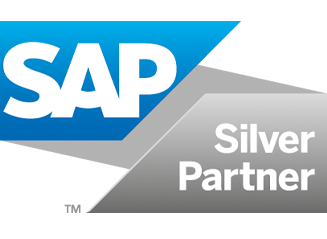VAT reporting is essential for governments to effectively monitor and regulate financial transactions, playing a central role in modern tax compliance. VAT is a crucial source of revenue for nations across the globe, as it is a consumption tax that is imposed at every step of the supply chain. When businesses participate in economic activities, they must navigate a landscape of VAT reporting requirements, following guidelines set by tax authorities.
The process of VAT reporting requires careful documentation and submission of transaction details to ensure accurate reporting of sales, purchases, and associated tax liabilities for businesses. VAT reporting goes beyond regulatory compliance and plays a crucial role in maintaining financial transparency, promoting fair taxation, and contributing to a nation’s overall economic health.
1. How VAT Reporting Works:
Reporting VAT is an essential part of financial management for businesses in jurisdictions with VAT systems. In a nutshell, VAT reporting requires businesses to document and submit information about their VAT transactions to the tax authorities. The process usually involves gathering data on sales, purchases, and other transactions that are subject to VAT. The compiled data is presented in a structured format, typically using VAT return forms. These forms provide a breakdown of the VAT collected on sales and the VAT paid on purchases. VAT reporting enables businesses to effectively communicate their VAT-related activities to tax authorities, ensuring compliance with tax regulations.
During the VAT reporting process, businesses determine their net VAT liability by deducting the total input VAT (VAT paid on purchases) from the total output VAT (VAT collected on sales). Businesses are obligated to remit this net liability to the tax authorities. Precise and prompt VAT reporting is crucial not just for meeting regulations, but also for maintaining seamless business operations and avoiding penalties or legal repercussions.
2. Why Should You Automate VAT Reporting?
Businesses are increasingly recognizing the importance of automating VAT reporting to improve efficiency, accuracy, and compliance in their financial operations. Reporting VAT manually can be a time-consuming process that is also prone to errors. This increases the risk of non-compliance and financial discrepancies. Automation, however, simplifies the entire VAT reporting process. Automated systems have the ability to smoothly integrate with a business’s financial software, extracting data directly from sales and purchase transactions. By minimizing the risk of human error and speeding up the reporting process, businesses can easily meet filing deadlines.
In addition, automated VAT reporting systems often include built-in validation checks to ensure that the reported data complies with tax regulations. This approach helps to greatly minimize the chances of making mistakes or errors in VAT returns. By implementing automation, valuable time and resources are freed up, allowing for a focus on strategic financial planning and business growth.
3. Import and Reconcile Your Data with VAT Reporting:
Importing and reconciling data accurately is crucial for VAT reporting. Data for VAT reporting is often found in different departments within businesses, such as sales, procurement, and finance. When this data is imported into a centralized VAT reporting system, it provides a complete overview of the business’s VAT-related transactions. Nevertheless, the task at hand is to align this imported data in order to guarantee precision and uniformity.
Automated systems for VAT reporting frequently incorporate functionalities that streamline the process of reconciling data. These systems ensure that sales and purchase transactions are automatically matched, aligning the input and output VAT accurately. The reconciliation process improves the accuracy of VAT reporting and gives businesses a clear and transparent audit trail, which is crucial for proving compliance during tax audits.
4. VAT Reporting Requirements:
It is crucial for businesses operating within a VAT system to have a thorough understanding of VAT reporting requirements. Regulations regarding specific requirements can vary greatly depending on the jurisdiction, so it is crucial for businesses to stay informed about any changes or updates. Important aspects of VAT reporting requirements usually involve the reporting frequency (monthly, quarterly, or annually), the format of the VAT return, and the submission deadlines.
Businesses frequently need to provide comprehensive information in their VAT reports. This includes the breakdown of sales and purchases, identification of VAT rates used, and documentation to support any VAT exemptions or credits claimed. Meeting these requirements not only guarantees compliance with the law, but also equips tax authorities with the essential information to accurately evaluate a business’s VAT liability.
5. VAT Reports and VAT Accounting Schemes:
VAT reports are crucial for showcasing a company’s financial well-being and compliance with tax laws. Businesses have the option to choose from various VAT accounting schemes, depending on factors such as their size, industry, or specific tax goals. There are several VAT accounting schemes available, such as the Cash Accounting Scheme, the Flat Rate Scheme, and the Annual Accounting Scheme.
One example is the Cash Accounting Scheme, which enables businesses to record VAT only when they receive or make payments, giving them a cash flow advantage. The Flat Rate Scheme streamlines VAT reporting by implementing a fixed percentage to total sales, thereby minimizing the administrative workload. The Annual Accounting Scheme simplifies the reporting process for businesses by allowing them to submit a single VAT return each year.
To sum up, VAT reporting plays a crucial role in the financial management of businesses that are subject to VAT systems. It is crucial for businesses to have a deep understanding of VAT reporting, the benefits of automation, the significance of precise data importation and reconciliation, compliance with reporting requirements, and the intricacies of different VAT accounting schemes in order to effectively navigate the complexities of VAT. Businesses can streamline their VAT reporting processes and promote transparency, compliance, and strategic financial decision-making by embracing automation and staying informed about evolving regulations.





